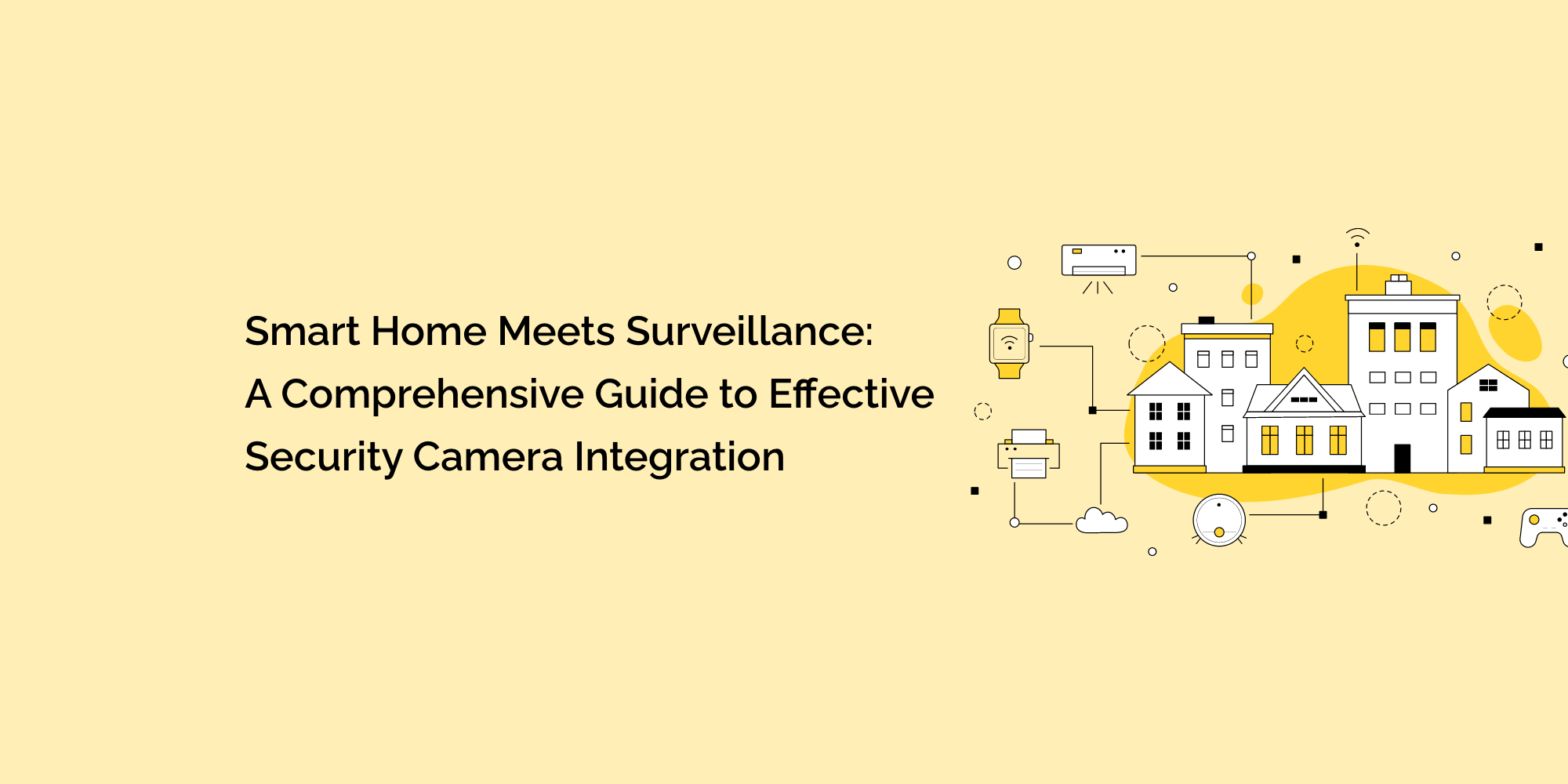The rise of smart home technology has transformed the way we interact with and secure our living spaces. One of the most significant advancements in home security is the integration of smart devices with surveillance cameras. This seamless fusion combines the convenience and intelligence of smart home systems with the vigilance and deterrence of security cameras. In this guide, we will explore the various aspects of effective security camera integration within a smart home environment, providing you with insights and tips for creating a comprehensive and proactive security strategy.
Understanding the Smart Home and Security Camera Integration
Smart homes leverage technology to enhance comfort, convenience, and security. Integrating security cameras within this ecosystem is a logical step, as it allows homeowners to monitor, respond to, and deter potential threats in real-time. This integration provides a holistic approach to safeguarding your home, belongings, and loved ones.
-
The Benefits of Integrating Security Cameras
Security cameras offer an array of benefits when integrated with smart home technology. These benefits include real-time monitoring, remote access, intelligent alerts, automation, enhanced privacy, and the ability to deter potential intruders.
-
Types of Security Cameras
Before integrating security cameras, it's essential to understand the various types available. These include indoor and outdoor cameras, wired and wireless options, fixed and pan-tilt-zoom (PTZ) cameras, and cameras with varying resolution and field of view capabilities.
-
Choosing the Right Cameras for Integration
Selecting the appropriate cameras for your smart home integration depends on your specific needs. Consider factors such as the areas you want to monitor, the camera's features, and its compatibility with your smart home ecosystem.
Integration Essentials: Creating a Unified Security Ecosystem
Effective security camera integration involves more than simply installing cameras around your property. It requires creating a unified security ecosystem that collaborates seamlessly with other smart devices within your home.
-
Selecting a Centralized Platform
Choose a central platform or app that allows you to manage all your smart home devices, including security cameras, in one place. This simplifies control, monitoring, and automation.
-
Smart Hub Compatibility
Ensure that your chosen security cameras are compatible with the smart hub or central control device you're using. Compatibility ensures a smooth integration process and seamless communication between devices.
-
Integration with Smart Locks and Access Control
Smart locks can collaborate with security cameras to provide an extra layer of security. When a visitor arrives, you can visually verify their identity through the camera feed before remotely granting access through the smart lock.
-
Automation and Alerts
Integrating security cameras with other devices, such as smart lights, motion sensors, and door/window sensors, enables automation that enhances security. For example, a camera detecting motion at your front door can trigger the lights to turn on, discouraging potential intruders.
-
Geofencing and Custom Profiles
Utilize geofencing technology to detect your smartphone's location. This feature can trigger customized actions, such as arming or disarming cameras, adjusting lighting, or changing temperature settings based on your proximity.
-
Integration with Smart Displays
Smart displays provide a visual and audible interface for monitoring security cameras. They can display live camera feeds, alerts, and even allow two-way communication with visitors.
Security and Privacy Considerations
While security camera integration enhances safety, it's crucial to prioritize privacy and ensure that your smart home ecosystem is secure from potential breaches.
-
Data Encryption and Secure Connectivity
Choose security cameras that offer encryption for data transmission and secure connectivity protocols. This prevents unauthorized access to camera feeds and other sensitive information.
-
Regular Software Updates
Keep your security cameras' firmware and software up to date. Regular updates often include security patches that protect against vulnerabilities and potential hacks.
-
Password Protection and Multi-Factor Authentication
Implement strong, unique passwords for your security cameras and associated accounts. Whenever possible, enable multi-factor authentication for an added layer of protection.
-
Privacy Zones and Scheduling
Many modern security cameras offer features like privacy zones, where you can blur specific areas in the camera's field of view to respect your neighbors' privacy or protect sensitive areas within your property.
-
Secure Cloud Storage Options
Opt for security cameras that offer secure cloud storage for recorded footage. This ensures that your data remains protected even if the camera is compromised.
Conclusion
The integration of security cameras within a smart home ecosystem offers a comprehensive approach to home security. By combining real-time monitoring, intelligent alerts, automation, and remote access, homeowners gain a heightened sense of control and peace of mind. To effectively integrate security cameras, select the right devices, create a unified security ecosystem, and prioritize security and privacy. As technology continues to advance, the possibilities for creating a secure and intelligent home environment are limitless, empowering homeowners to protect what matters most with efficiency and sophistication.








